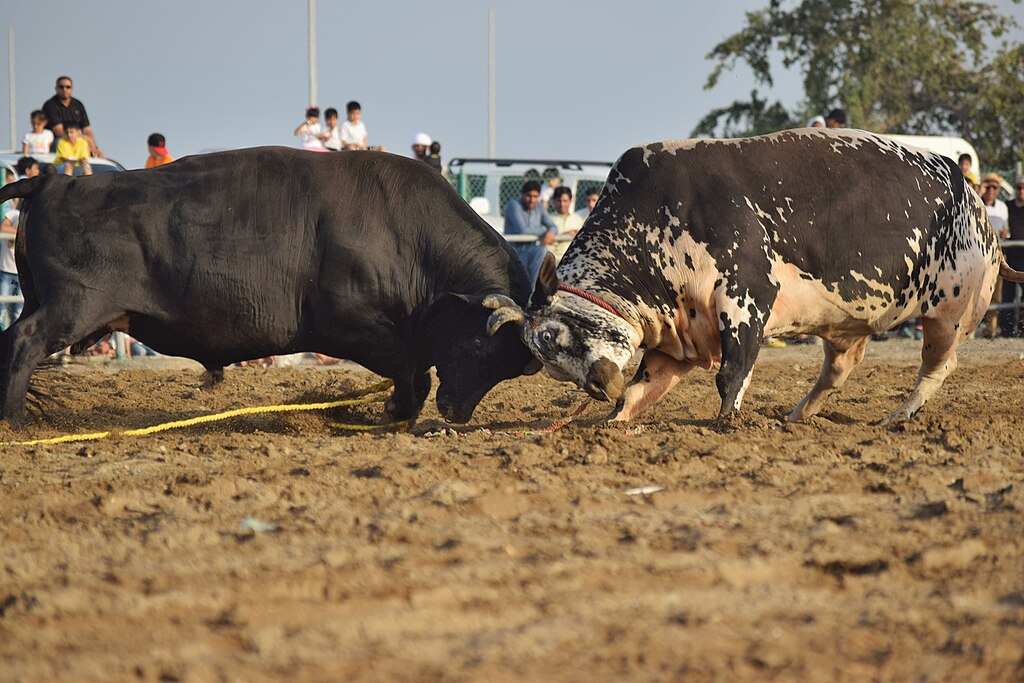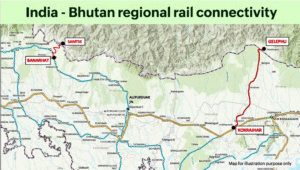
Dhirio: Goa’s Traditional Bullfights and the Debate on Legalisation
Introduction
Goa is not only known for its beaches and vibrant culture but also for its traditional practices that trace their roots back centuries. Among these, dhirio (also called dhiri)—the practice of bullfighting—has remained a deeply controversial yet culturally significant tradition. Politicians in Goa, across party lines, have recently raised the demand for the legalisation of dhirio, calling it an integral part of the state’s cultural fabric and a means to boost tourism and local economy.
The practice, however, is banned under the Prevention of Cruelty to Animals Act, 1960, and remains a subject of debate in the courts, legislature, and civil society. The renewed push for its recognition has once again brought the clash between tradition, animal rights, and law into public focus.
For aspirants preparing with online coaching for CLAT and especially those looking into CLAT Current Affairs 2026, this debate holds immense importance as it involves law, constitutional morality, cultural practices, and the role of state regulation. At CLAT Gurukul, the best online coaching for CLAT, we emphasize such socio-legal topics that are bound to appear in legal reasoning and current affairs sections of exams.
Why in News?
- Recently, Goan MLAs across party lines demanded that the government legalise dhirio, describing it as a practice deeply rooted in Goan culture.
- They argued that dhirio dates back to the Harappan civilisation and is part of Goa’s heritage.
- Legislators also highlighted its potential to generate revenue through tourism and called it similar to cultural practices accepted in other states, such as jallikattu in Tamil Nadu.
- The Goa Chief Minister assured the Assembly that the government would examine the issue and see what can be done.
- The debate arises against the backdrop of a 1996 High Court ban on bullfighting in Goa after the death of a man during one such fight, citing the Prevention of Cruelty to Animals Act, 1960.
- Despite the ban, illegal fights continue in parts of coastal Goa, often advertised secretly through WhatsApp and Facebook.
Thus, the matter is in the news because it reflects the ongoing legal, cultural, and ethical debate on whether such traditions should be preserved or abolished in modern India.
Point-wise Summary of the Content
- Cultural and Historical Roots
- Dhirio is described as an integral part of Goan culture.
- References in history suggest that owners valued bulls as part of agricultural economy and cared deeply for them.
- Traditional fights were a form of community entertainment linked to harvest seasons, somewhat similar to bull-related traditions in Spain and Portugal.
- How Dhirio is Conducted
- Two bulls are pitted against each other, trained by their handlers.
- The fight begins with the bulls locking horns until one of them collapses, flees, or is injured.
- The contests often last only a few minutes but result in serious injuries or death for the animals.
- Spectators place bets, adding a commercial angle to the fights.
- Popularity in Goa
- Events like the one in Taleigao village near Panaji attracted over 5,000 spectators, including politicians and dignitaries.
- The fights were once seen as popular public festivals, drawing comparisons with European bull derbies.
- The Ban on Bullfighting
- In September 1996, Xavier Fernandes was killed during a bullfight in Ambaji-Fatorda.
- Following this, People for Animals (PFA) filed a petition in the Bombay High Court at Goa.
- The Court ruled that bullfights were in violation of the Prevention of Cruelty to Animals Act, 1960.
- Since then, all forms of animal fights, including dhirio, have been officially banned in Goa.
- Continued Illegal Practices
- Despite the ban, fights continue in coastal villages.
- Locations are often kept secret and shared on social media platforms shortly before the fights.
- Police reports confirm cases of organisers being booked under PCA Act provisions.
- Arguments in Favour of Legalisation
- Cultural Preservation – MLAs argue it is part of Goa’s heritage and identity.
- Regulated Framework – Supporters say fights can be held under guidelines to minimise cruelty.
- Tourism and Revenue – Dhirio could boost Goa’s tourism, much like jallikattu has become a major attraction in Tamil Nadu.
- Comparison with Other Sports – Some argue it is like boxing, where participants (here, bulls) test their strength.
- Arguments Against Legalisation
- Animal Cruelty – Activists argue it causes unnecessary harm, injury, and sometimes death to animals.
- Public Safety – Fights can also cause injuries and fatalities to spectators, as seen in 1996.
- Violation of PCA Act – Legalisation would directly conflict with the Prevention of Cruelty to Animals Act.
- Moral Concerns – Critics argue that entertainment at the cost of animal suffering cannot be justified.
- Political Reactions
- Goa CM Pramod Sawant: Assured MLAs that the government would examine the issue.
- Former Goa CM Francisco Sardinha: Expressed support, comparing dhirio to other sports.
- PETA India and animal rights activists: Strongly opposed, calling it violent and cruel.
Notes – Peculiar Terms Explained
- Dhirio (or Dhiri) – Traditional bullfighting practice in Goa where two bulls are made to fight until one submits or flees.
- Jallikattu – A Tamil Nadu bull-taming sport where participants attempt to grab a bull’s hump and hang on; legalized by Parliament through an amendment in 2017 after public protests.
- Prevention of Cruelty to Animals Act, 1960 (PCA Act) – Central legislation prohibiting practices that cause unnecessary pain or suffering to animals.
- People for Animals (PFA) – An animal welfare NGO that filed a petition leading to the ban on bullfights in Goa.
- Operation Sindoor Comparison – Like debates on Agnipath Scheme, dhirio also raises the law vs tradition vs economy dilemma.
- Contempt Petition – In 2021, the High Court was approached alleging illegal bullfights despite the ban.
Legal and Constitutional Dimensions
- Article 48 (Directive Principles of State Policy): Mandates the state to take steps for preserving and improving animal breeds and prohibiting their slaughter.
- Article 51A(g): Fundamental Duty of citizens to show compassion towards all living creatures.
- Judicial Precedents:
- Animal Welfare Board of India v. A. Nagaraja (2014) – Supreme Court banned jallikattu, holding it as cruelty under PCA Act.
- Prevention of Cruelty to Animals (Tamil Nadu Amendment) Act, 2017 – Parliament later legalized jallikattu under cultural exemption.
- The dhirio debate is similar: whether culture and tradition can override animal rights and statutory protections.
Analytical Perspective
- Culture vs Animal Rights
- Dhirio reflects Goa’s identity but stands at odds with modern constitutional morality that prioritises compassion for animals.
- Tourism vs Ethics
- Legalisation could boost tourism, but is it justified to commodify cruelty?
- Comparisons with Jallikattu
- Tamil Nadu successfully brought a constitutional amendment to protect jallikattu as cultural heritage. Goa may push for a similar move.
- Enforcement Problem
- Even after 1996, fights continue illegally, showing weak enforcement mechanisms in rural settings.
- Possibility of Regulation
- Could Goa create a regulatory model that balances tradition with animal welfare, or is an outright ban the only option?
Conclusion
The dhirio debate once again reflects India’s struggle to balance tradition, law, and modern ethical standards. While MLAs in Goa push for its legalisation to preserve culture and boost tourism, animal rights activists argue it violates the Prevention of Cruelty to Animals Act, 1960 and constitutional principles of compassion.
For CLAT Current Affairs 2026, this issue highlights the intersection of law, culture, constitutional morality, and policy-making. At CLAT Gurukul, the best online coaching for CLAT, we ensure students engage with such debates because they sharpen legal reasoning skills and provide deeper insights into how courts and governments address conflicts between tradition and modern law.
Whether dhirio is eventually legalised like jallikattu or continues to remain banned, it will remain a landmark case study for law aspirants, shedding light on how India negotiates its cultural identity within a constitutional framework.
This Blog is Powered by CLAT Gurukul — India’s Leading Law Entrance Prep Platform
At CLAT Gurukul, we believe in empowering future legal minds with the right blend of knowledge, strategy, and mentorship. This blog is a reflection of our commitment to quality content that not only helps aspirants stay updated but also sharpens their conceptual clarity.
Why CLAT Gurukul?
- Personalized Mentorship by Top Legal Educators
- Comprehensive Study Materials & Legal Updates
- Daily Practice Sets, Mocks & Performance Tracking
- Result-Oriented Strategy for CLAT, AILET, and CUET
Whether you’re reading this article to deepen your understanding or to stay ahead in your exam prep — you’re already one step closer with CLAT Gurukul by your side.
Join thousands of successful aspirants who trusted CLAT Gurukul and cracked India’s top law entrance exams.
Visit https://www.youtube.com/@CLATGurukul/shorts to learn more or speak to our experts now!
Note from CLAT Gurukul
At CLAT Gurukul, we are committed to providing free CLAT study material, including CLAT current affairs, legal reasoning practice sets, general knowledge updates, logical reasoning questions, English comprehension exercises, and more — all curated by top mentors.
Our blog section is regularly updated with high-quality CLAT content tailored to match the evolving pattern of the CLAT UG exam. Whether you’re looking for CLAT 2026 current affairs, CLAT legal reasoning passages, or mock practice sets, we have you covered.
We believe in open-access learning and will continue to publish free CLAT preparation resources to help serious aspirants succeed.
Explore more free content under categories like:
Best online coaching for CLAT, CLAT current affairs, CLAT GK updates, CLAT legal updates, CLAT logical reasoning, and CLAT English preparation.
For structured learning, daily mocks, and expert mentorship, visit https://www.youtube.com/@CLATGurukul/shorts — the Best CLAT Coaching in Patna and India’s most trusted platform for CLAT online coaching.




